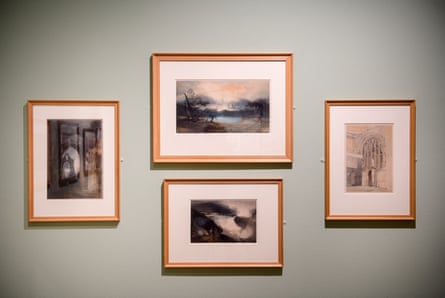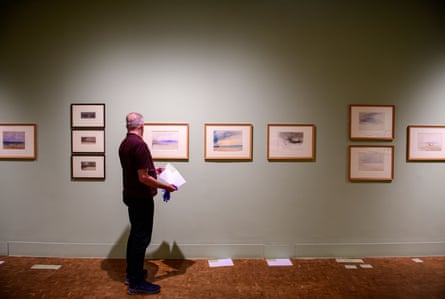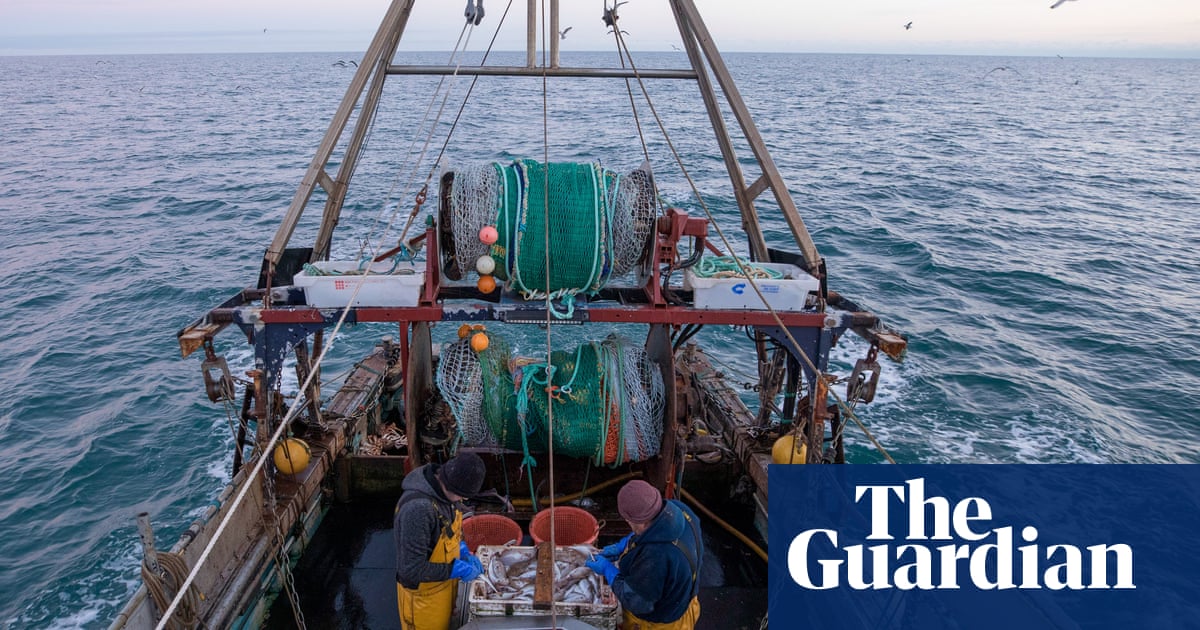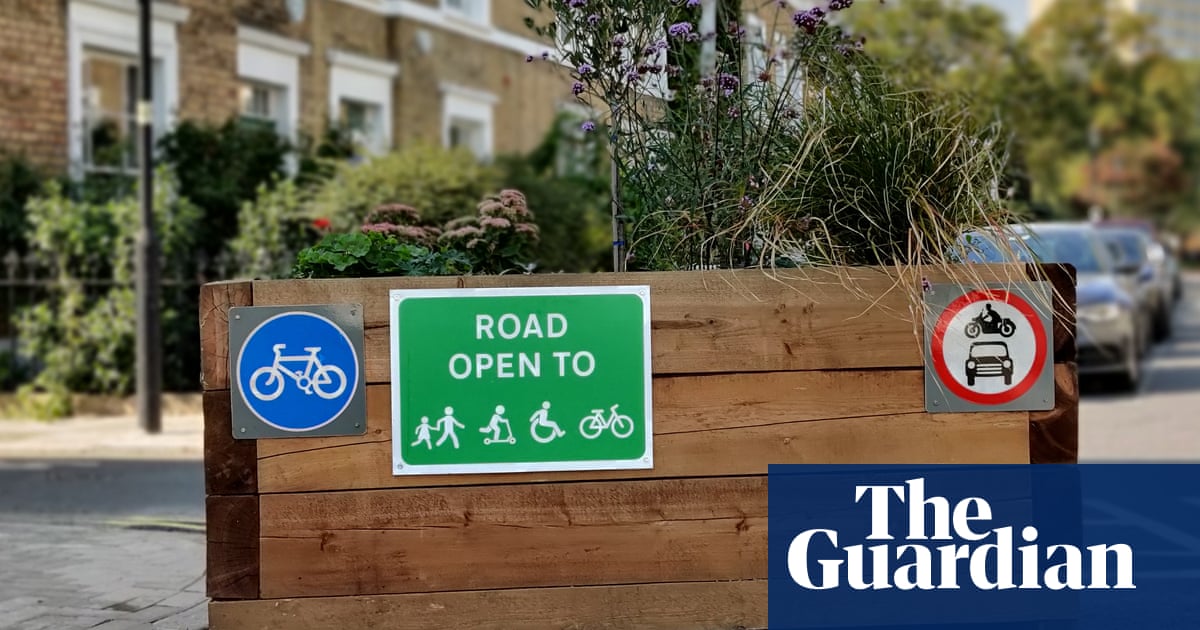It is, says the curator Ian Warrell, a little like peering over JMW Turner’s shoulder as he puzzles out how to create the sweeping land and seascapes that made him one of the greatest ever.
An exhibition of the artist’s rarely seen watercolours is opening in Bath, which includes scenes of the English West Country that he created as a teenager to a series of sketched seascapes when he was a much older man gazing out at storms off the Kent coast.
Called Impressions in Watercolour, the exhibition gives insight into Turner’s methods and serves a reminder of how important he was as a bridge between earlier landscape painting and the radical abstraction of the 20th century.

The first of the 32 Turner watercolours on show at the Holburne Museum from Friday 23 May were painted in the early 1790s when the artist was about 16 or 17.
One is a view of Bath from a hill made to look much more craggy than the actual rolling landscape around the Georgian city. Next to it is another West Country view, the romantic ruins of Malmesbury Abbey in Wiltshire.
Both show Turner’s interest in the “theory of the sublime” that came to the fore later in his sea storms and mountain scenes. “It was all very conventional at this stage,” said Warrell, a Turner specialist. “But you can see he is ambitious.”
A highlight of the exhibition is a series of seascapes that Turner painted as a much more mature artist in Margate, Kent.

Warrell said: “He’d been to Margate as a child because London was so polluted that his family sent him to school there, and then he went back again from the 1820s repeatedly.
“He’d look out from his lodgings out on to the beach and see the sun rising and setting and the boats and all the goings on. Turner said the skies over Margate and that area were the best in Europe, better than the Bay of Naples. The more turbulent the weather … the happier he was.
“All the time he’s experimenting. Some of these watercolours are very simple meditations. Some probably would only have taken him no more than half an hour.”
Unlike the great Turner paintings such as The Fighting Temeraire, which is viewed by hundreds of thousands of people every year, these pictures are from private collections and are rarely seen or reproduced.

They show how he continued to play with and refine themes and feelings. A Steamboat and Crescent Moon was sketched in Margate in about 1845, seven years after he painted The Fighting Temeraire, but a squiggle of smoke harks back to the fiery funnel in the grand oil painting.
“All the time he’s doing this, he’s training his hand and eye, coordinating, trying ideas that he might use,” Warrell said. “It’s bold and his colour is different to anybody’s work at that time. He doesn’t always use the widest range of colours but the yellows and blues are very distinctive. He’s trying to capture a moment or just the atmosphere of that moment.”
Also featured in the exhibition are the artist’s contemporaries, including Thomas Girtin, who like Turner was born 250 years ago in 1775, and John Sell Cotman.
The exhibition runs from 23 May until 14 September.

 5 hours ago
5
5 hours ago
5

















































